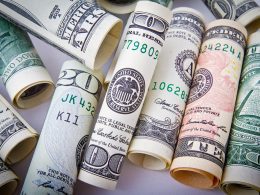The relationship between interest rates and consumer spending is a critical Rising Interest Rates aspect of economic stability and growth. With rising interest rates, consumers often face higher costs on loans and credit, which can influence their spending habits. This article explores how rising interest rates impact consumer spending, the reasons behind these rate changes, and the potential short- and long-term economic implications.
What Are Interest Rates and Why Do They Rise?
Interest rates represent the cost of borrowing money and are set by central banks, such as the Federal Reserve in the United States, to influence the economy. When central banks raise interest rates, it typically reflects an attempt to control inflation, cool off an overheated economy, or respond to broader global financial pressures. Factors such as rising inflation, strong economic growth, and shifts in global trade can lead central banks to raise interest rates.
Key Takeaway: Rising interest rates make borrowing more expensive, affecting loans, mortgages, and credit cards, which directly influences consumer spending.
How Rising Interest Rates Affect Consumer Spending

Rising interest rates have a direct impact on consumer spending due to changes in the cost of borrowing and the value of savings. When interest rates increase, consumers tend to adjust their spending and savings behaviors in response to higher borrowing costs and improved returns on savings.
- Higher Loan Repayments and Reduced Disposable Income When interest rates rise, so do the costs of monthly loan repayments for mortgages, personal loans, and other debts. This increase reduces disposable income for many consumers, leading to a tightening of household budgets and a decline in discretionary spending on non-essential items like dining out, vacations, and entertainment.
- Increased Credit Card Interest Rates Credit card interest rates are often tied to the prime rate, which is influenced by changes in the federal funds rate set by central banks. As rates increase, so do interest payments on credit card balances. Higher costs of credit discourage consumers from making purchases on credit, leading to a slowdown in overall spending.
- Incentive to Save More Rising interest rates mean consumers earn more on their savings accounts, which can encourage a shift from spending to saving. This is particularly common among more conservative consumers who prefer to save when interest returns are higher. A higher savings rate means less immediate spending, affecting retail sales and other consumer-driven sectors of the economy.
Key Takeaway: Rising interest rates often shift consumer behavior from spending to saving, which can lead to reduced retail activity and slower economic growth.
The Impact on Different Consumer Segments
The effects of rising interest rates are not uniform across all consumer demographics. Different groups experience these impacts based on their borrowing habits, income levels, and economic priorities.
- Low-Income Households Low-income households typically feel the greatest strain when interest rates rise, as they are more likely to rely on credit for basic expenses. Higher borrowing costs can lead to financial hardship, with limited flexibility to cut non-essential spending.
- Middle-Income Households Middle-income households may curb their discretionary spending to adjust for increased mortgage or loan payments. This segment often reduces spending on luxury goods, travel, and entertainment, causing a ripple effect on sectors reliant on discretionary consumer spending.
- High-Income Households While high-income households are not as dependent on credit for essential expenses, they may still reduce their spending on high-end goods and services if they see better returns on investments or prefer to increase savings. High-income consumers may shift focus to investment in fixed-income products, such as bonds, which become more attractive with higher interest rates.
Key Takeaway: The response to rising interest rates varies, but overall, there is a tendency toward reduced discretionary spending across income levels, with low-income households being the most affected.
Short-Term and Long-Term Economic Impacts
Understanding both the short-term and long-term economic impacts of rising interest rates is essential for assessing their influence on consumer spending and the broader economy.
- Short-Term Economic Impacts In the short term, rising interest rates typically lead to a decrease in consumer demand for big-ticket items that require financing, such as cars, homes, and appliances. This can result in reduced revenue for industries dependent on consumer financing, such as the real estate and automotive sectors. Additionally, lower spending can slow economic growth and even lead to layoffs in sectors with declining demand.
- Long-Term Economic Impacts Over the long term, sustained high-interest rates can lead to a balanced economic environment by controlling inflation and stabilizing growth. However, prolonged high rates can also discourage business investments, potentially limiting job creation and wage growth. Consumers may adjust to higher interest rates over time, leading to more sustainable spending patterns, but sectors like housing may experience prolonged slowdowns.
Key Takeaway: While short-term impacts may include reduced spending and slower economic growth, long-term effects can result in economic stabilization and inflation control, though some industries may face prolonged challenges.
Strategies for Consumers to Navigate Rising Interest Rates
While rising interest rates can be challenging, consumers can employ strategies to better manage their finances and mitigate the impacts.
- Refinance Loans When Possible Refinancing loans at lower rates before further increases can help reduce monthly payments. Consumers should check with lenders about options to lock in lower rates, especially for mortgage and auto loans.
- Prioritize Paying Down High-Interest Debt Paying off high-interest debts, especially credit cards, becomes even more essential during periods of rising rates. Reducing outstanding debt can help lower the overall interest burden on households.
- Increase Savings and Investment in Interest-Bearing Accounts Taking advantage of higher interest rates on savings accounts and bonds can help consumers offset increased borrowing costs. Shifting funds to high-yield savings accounts can offer more returns and promote better financial security.
Key Takeaway: Consumers can offset the impact of rising rates by focusing on refinancing, paying down high-interest debt, and increasing their savings in high-yield accounts.
Analysis Table: Effects of Rising Interest Rates on Consumer Spending
| Impact Area | Description | Consumer Response |
|---|---|---|
| Loan Repayments | Higher monthly payments on mortgages and loans | Reduced disposable income, cutbacks on non-essentials |
| Credit Card Costs | Increased interest on credit card balances | Lower credit-based spending |
| Savings Returns | Higher returns on savings accounts | Increased savings, reduced discretionary spending |
| Income Group Effects | Varied impact across low-, middle-, and high-income groups | Different spending adjustments based on financial stability |
Comparative Table: Short-Term vs. Long-Term Economic Effects of Rising Interest Rates
| Aspect | Short-Term Impact | Long-Term Impact |
|---|---|---|
| Consumer Spending | Decrease in demand for financed purchases | Adjusted spending patterns, increased savings |
| Inflation | Slower growth in inflation | Controlled inflation rates |
| Industry Impact | Slowdown in real estate and automotive sales | Prolonged effect on industries reliant on loans |
| Employment | Potential layoffs in consumer-driven sectors | Stable job growth in stabilized economy |
Conclusion
Rising interest rates play a crucial role in moderating economic activity and controlling inflation. However, for consumers, higher rates can mean a shift in spending, more cautious financial planning, and potentially tighter budgets. Although this can slow down economic growth in the short term, the overall impact can foster a more stable and controlled economic environment. By understanding these dynamics and adjusting their financial strategies, consumers can better manage the impacts of rising interest rates on their spending.












